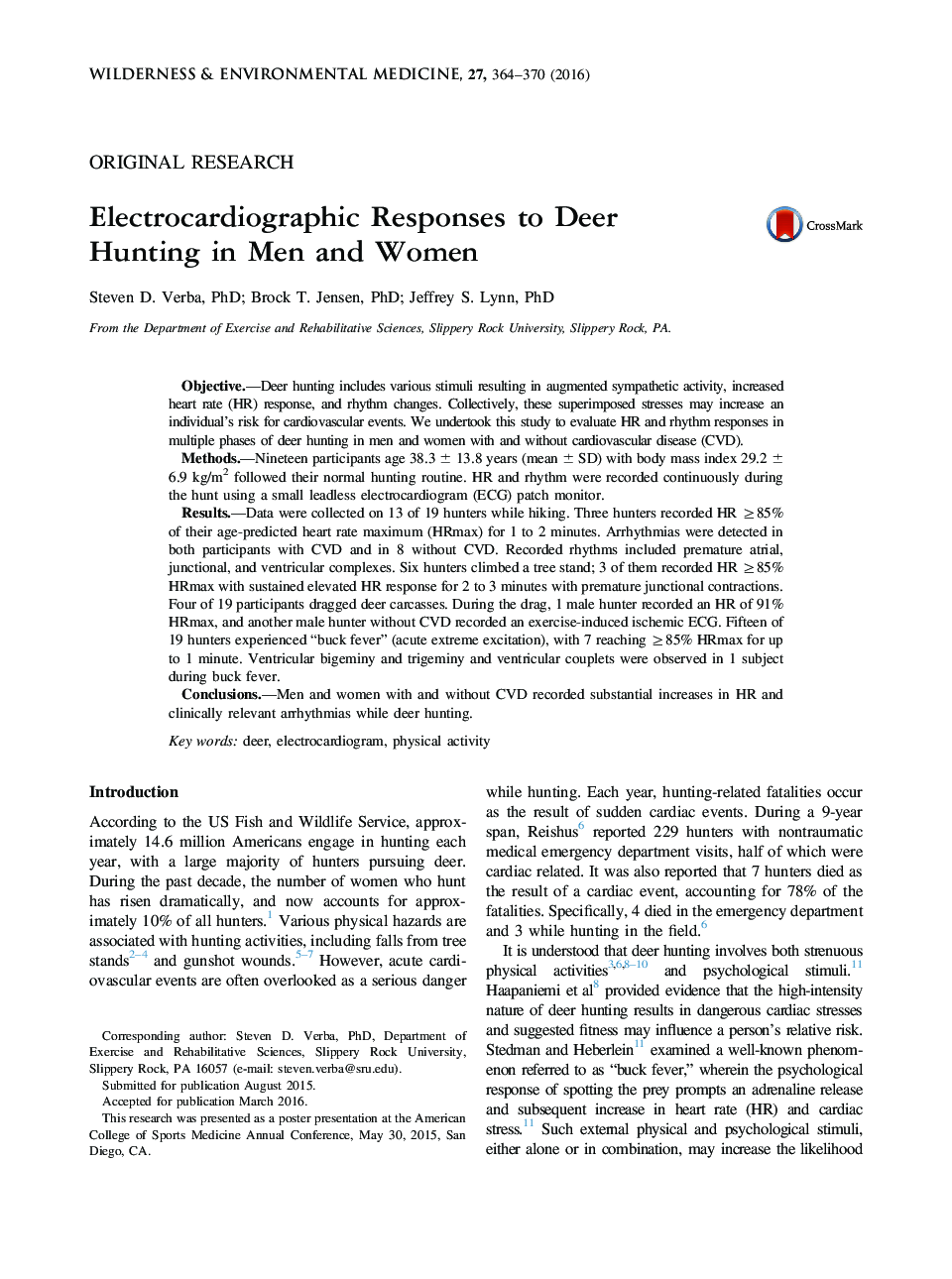| Article ID | Journal | Published Year | Pages | File Type |
|---|---|---|---|---|
| 2614492 | Wilderness & Environmental Medicine | 2016 | 7 Pages |
ObjectiveDeer hunting includes various stimuli resulting in augmented sympathetic activity, increased heart rate (HR) response, and rhythm changes. Collectively, these superimposed stresses may increase an individual’s risk for cardiovascular events. We undertook this study to evaluate HR and rhythm responses in multiple phases of deer hunting in men and women with and without cardiovascular disease (CVD).MethodsNineteen participants age 38.3 ± 13.8 years (mean ± SD) with body mass index 29.2 ± 6.9 kg/m2 followed their normal hunting routine. HR and rhythm were recorded continuously during the hunt using a small leadless electrocardiogram (ECG) patch monitor.ResultsData were collected on 13 of 19 hunters while hiking. Three hunters recorded HR ≥85% of their age-predicted heart rate maximum (HRmax) for 1 to 2 minutes. Arrhythmias were detected in both participants with CVD and in 8 without CVD. Recorded rhythms included premature atrial, junctional, and ventricular complexes. Six hunters climbed a tree stand; 3 of them recorded HR ≥85% HRmax with sustained elevated HR response for 2 to 3 minutes with premature junctional contractions. Four of 19 participants dragged deer carcasses. During the drag, 1 male hunter recorded an HR of 91% HRmax, and another male hunter without CVD recorded an exercise-induced ischemic ECG. Fifteen of 19 hunters experienced “buck fever” (acute extreme excitation), with 7 reaching ≥85% HRmax for up to 1 minute. Ventricular bigeminy and trigeminy and ventricular couplets were observed in 1 subject during buck fever.ConclusionsMen and women with and without CVD recorded substantial increases in HR and clinically relevant arrhythmias while deer hunting.
